How to make India's Golden Triangle an unforgettable family adventure

The “Golden Triangle” of Delhi, Agra and Jaipur is often described as the perfect introduction to northern India. For years, escorted tours have whizzed around taking in all the temples, tombs and tigers at speed, with throngs of tourists dazzled by some of the Subcontinent’s most sublime landscapes and landmarks.
But it is also a family adventure that is ripe for the taking, particularly if you travel during the (admittedly humid) off-season – which neatly coincides with our summer holidays. Yes, it can be overwhelming at times. Yes, it will take you and your offspring out of your comfort zones. But experience it at an unhurried pace – with the right level of guiding and assistance, as we did – and it will provide a rich river of experiences that will stay with each of you forever.
Day 1-3
Adrenalin rush
It all starts in a frenzy. With 30 million people living in Delhi, the pace is unavoidably hectic. However, exploring the relative order and green spaces of Edward Lutyens’ New Delhi, and the chaotic, colourful winding streets of Old Delhi – expertly led by our guide Puman – was a multisensory experience, especially for my nine-year-old son, who found it slightly unnerving.
We whirled from the beautiful gardens and 16th-century architecture of Humayun’s Tomb (“the Red Taj Mahal”) to the Victorian grandeur of India Gate – but even the wide avenues of New Delhi couldn’t dull India’s real national sport: honking horns. Thank goodness for the oasis of calm at the Imperial Hotel, its art-lined corridors, the stunning hand-painted Spice Route (which took seven years to complete) and an enchantingly immersive evening meal that kicked off the gastronomic part of our adventure.
Old Delhi was a day on timelapse adrenalin, from the moving philanthropy of the Gurudwara Bangla Sahib Sikh temple to the aromatic rusty rainbow of the 17th-century Spice Market and a Mission Impossible rickshaw ride through the jewel kaleidoscope of Chandi Chowk market, all shimmery wedding silks, glittering headdresses and – my favourite – acid-hued garlands and pom poms.
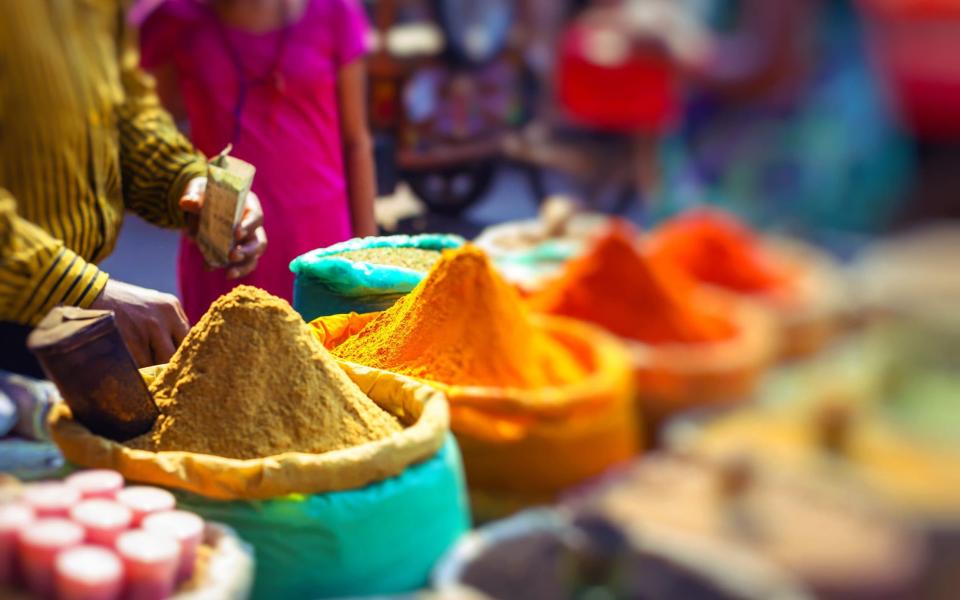
More than 600 million people in India live below the poverty line, and nowhere was this more obvious than in Old Delhi. Just when the sheer number of people on the streets felt like it might overwhelm my daughter, aged 12, we dipped through a doorway into the cool courtyard sanctuary of 200-year-old Unesco-awarded Haveli Dharampura whose recent renovation into a boutique hotel and restaurant gives a taste of a rarified bygone way of life.
Day 4
Wide-eyed wonder
The high-speed (and air-conditioned) Gatimaan Express takes just 90 minutes to reach Agra from Delhi. Travelling in August meant we passed through lush, green landscapes (and had little of the torrential monsoon rain we had imagined). However, there were days of intense humidity, so on arrival it was time to take a breather. Following an afternoon by the pool of the Trident hotel we headed to the Taj Mahal – via Agra Fort – for sunset.
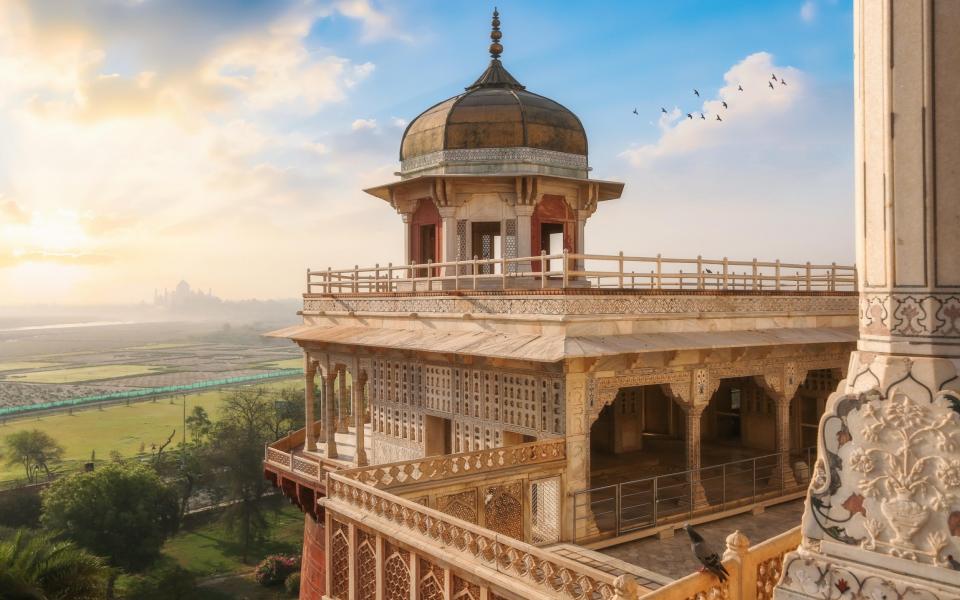
The Taj Mahal itself is as spectacular as you imagine, with its translucent marble minaret and shimmering walls, delicately inlaid stones and majestic towers that change with every shift of the light. It is solid, yet everlastingly ethereal. As we discovered, everyone takes their own version away with them.
Puman had her own version, too. The grandchild of Pakistani refugees, she grew up as an outcast in her own country. Her former home in the poorest ghetto of Agra is now a café (one listed by Lonely Planet guides as having the best view of the Taj Mahal). Growing up, did she appreciate this extraordinary playground, I wondered? “We were free to roam it whenever we liked,” she mused, “but our family life was so hard then. I prefer not to dwell on the dark times.” Such extravagant splendour juxtaposed with extreme poverty seemed to sum up the many contradictions of modern India.
When we visited, there were surprisingly few foreign faces (the result of a slow tourism recovery after the pandemic, and India’s notoriously complicated tourist visa process). So as dusk fell and the few domestic visitors petered out, we reluctantly retreated, leaving Shah Jahan and his beloved wife, Mumtaz Mahal, alone once more in this extraordinary mausoleum.
Days 5-7
Where the wild things are
A fever pitch of excitement fuelled the six-hour drive to Ranthambore, with its promise of tigers. We passed streams of flip-flopped pilgrims – on foot, in buses, on floats with bombastic sound systems and flashing lights – celebrating Ganesh Chaturthi, the biggest festival in India. We competed to spot the largest number of people on a single motorbike (six, since you ask), and the children obsessed over every random animal in the road: cows, dogs, pigs, camels, even elephants.
Ranthambore National Park, a wild jungle scrub stretching across almost 250 square miles of open meadows and dry deciduous forests – with the mighty fort that lends its name to the reserve rising majestically in the centre – offers a fantastic chance to see Royal Bengal tigers. Sujan Sher Bagh is the oldest safari camp in the area and offers an incomparably elegant base for game drives and expert guiding.
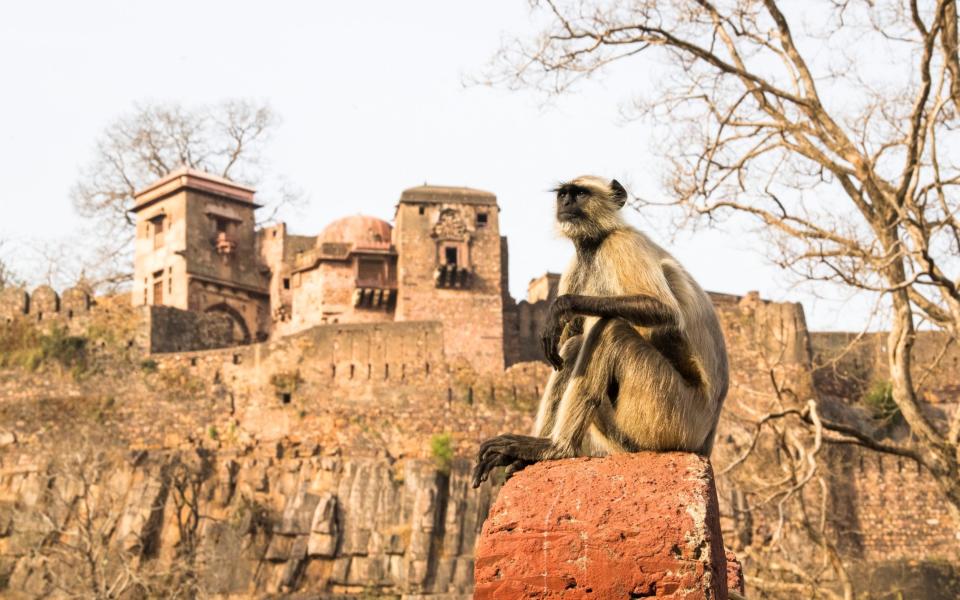
Attention to detail governs everything, from the exquisite decor and local handicrafts, to the Anglo-Indian cuisine cooked on outdoor clay ovens and served thali style. The 5am alarm calls embodied a true spirit of adventure as we headed off into the lamplit dawn for game drives that took us through lush green jungle, dotted by ruins of palaces, cenotaphs and follies. We saw samba, chitak, wild boar, Indian hare, spotted deer, antelope, and many, many monkeys… and more pilgrims, some of whom had been walking for days. Every drive was punctuated by the tracks or “pugmarks” of tigers and, on one, tracks from a leopard kill. At each, we had imagined eyes watching us from the jungle depths.
Our afternoons were spent luxuriating by our private pool, browsing oversized wildlife books and leather-bound classics in the beautiful library, or taking in the spa. After sundowners, dinner was served around a crackling campfire beneath a starlit sky.
Fewer tourists meant more tiger sightings, at least in theory. But after a record monsoon season, the grasses were high. Our days in camp were the only time during our trip that rain fell, and tigers are – we were told – not great fans of inclement weather. The net result: Panthera tigris tigris remained elusive. It didn’t matter; Sher Bagh’s magic had overwhelmed us.
Days 8-10
India’s Game of Thrones
Our next stop offered something entirely different. An hour’s drive across rural Rajasthan took us to Fort Bawara, a new sanctuary of wellbeing offered by the Six Senses hotel group. More citadel than hotel – and the ideal destination for my inner Game of Thrones geek – this sensitive 14th-century walled fort conversion was originally owned by a Rajasthani royal family. It faces the Chauth ka Barwara Mandir temple and incorporates two palaces and two temples (a local priest welcomes guests with a traditional Puja ceremony). Many of the original walls, tiles and paintings have been left intact, swifts nest in the eaves, and a focus on integrating local life gives it a unique rhythm; villagers have artisan work stations around the fort.
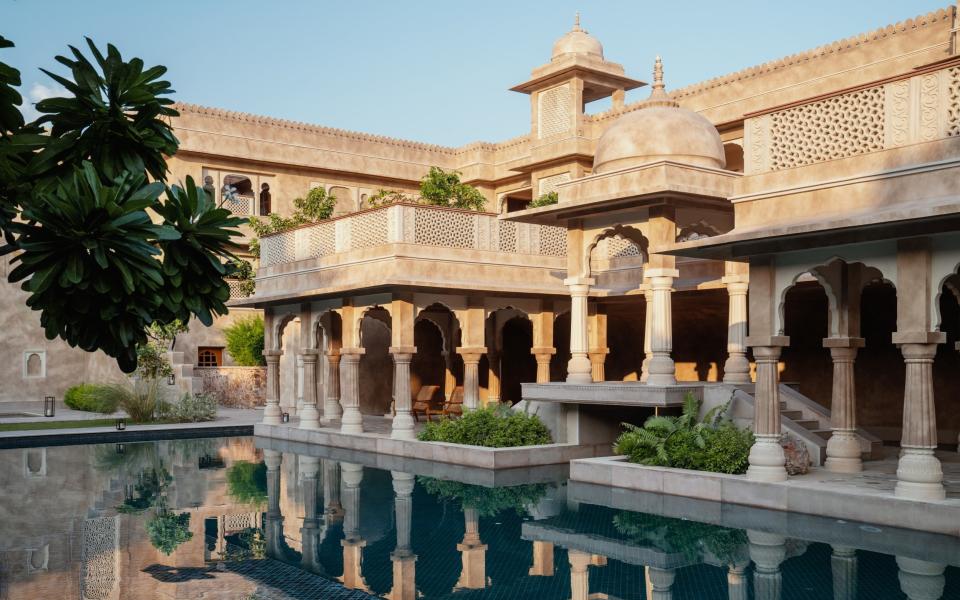
The pool, set in the courtyard, provided relaxation and fun – not to mention unintentional entertainment courtesy of a procession of Bollywood-inspired Instagrammers and their eye-catching wardrobes. The wellness offering, too, is renowned (the findings of my asthmatic husband’s Ayurvedic health screening led him to an intense lesson in pranayama breathing).
Day 11
Meet the elephants
From Fort Bawara it was a few hours to Dera Amer, a beautiful wilderness camp in the foothills of the ancient Aravalli Hills, set in a private protected forest. After a potter around the premises in a camel cart we met 48-year-old rescue elephant Laxmi, fed her bananas and washed her feet, then took her for a guided walk before our candlelit dinner. Then it was onwards to Oberoi Rajvilas, some 30 minutes outside the city. Its 300 acres, complete with a 300-year-old temple, provided a spacious, picturesque escape from the hubbub of the city centre. Resident peacocks offered exotic morning wake-up calls and left tempting feathers for the children to collect.
Day 12-14
Pink City adventure
Jaipur was a city we could enjoy at our own pace. Less busy than Delhi, but just as vibrant, it displayed Rajasthan’s colour, regal history and artisan culture. The stunning City Palace, with its armoury and royal costume archive, proved a surprise all-round hit; the nearby market was a gentler place to browse and buy souvenirs; and lunch at Rambagh Palace – set in 47 acres of beautiful landscaped gardens – evoked the impeccable service and charm of days gone by. For the astrology obsessives in our party, Jantar Mantar, an observatory built by Jai Singh in 1728, was captivating.
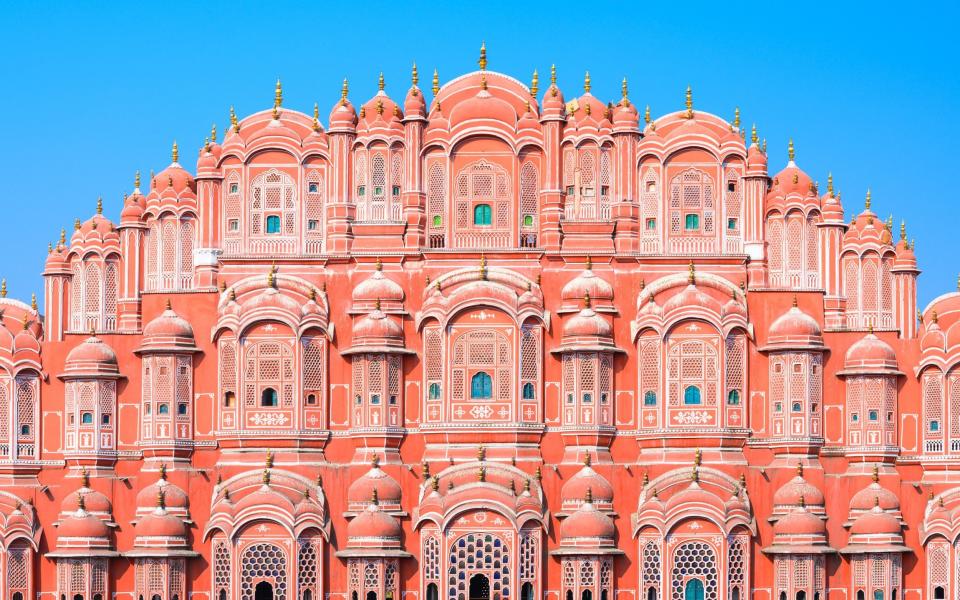
Bar Palladio, located in the historic Narain Niwas Palace hotel, was our penultimate night’s wonderland, a playfully otherworldly combination of Italian style and cuisine and Mughal grandeur, complete with wandering peacocks, mature mango trees, and a garden of fairy-lit tented canopies.
If adventure is about the impression it leaves, and the life lessons learnt, India is the place. The lack of tourists during our visit only enhanced our experience of the warmth and friendliness of the people, who opened our eyes to so much more than their country. India has left an indelible mark on our souls, and our bond as a family.
Essentials
Lou Barraclough travelled as a guest of Scott Dunn (020 8682 5075; scottdunn.com), which offers a 14-night trip to the Golden Triangle and Rajasthan from £6,684 pp based on a family of four, staying at the Imperial New Delhi; the Oberoi Amarvilas, Agra; Sujan Sherbagh Ranthambhore; the Oberoi Rajvilas, Jaipur; and the Oberoi, Gurgaon – all on a B&B basis. The price includes international and internal flights, all ground handling including a car and driver, sightseeing and game drives
Virgin Atlantic (0344 874 7747; virginatlantic.com) flies direct from Heathrow to Delhi, with return fares from £489 per person
Holiday Extras (0800 316 5678; HolidayExtras.com) offers meet and greet parking at Heathrow from £161.95 (14 days)


